Those of you that have read our previous posts will know that “Old Nick” has an array of electronic equipment and systems on board, which take care of the propulsion, lighting, heating and many other common tasks on a modern narrowboat.
These systems all perform their individual tasks very well but link them all together, create a control centre – with a clear and simple user interface – and you suddenly have something even more powerful and beneficial.
This is the “icing on the cake” on an Ortomarine boat. Rob Howdle (their CTO) has drawn upon his many years of design experience in the industrial automation field, to create a bespoke narrowboat control system. Their system provides the boat owner with a wealth of data, control and features that are not possible on other narrowboats.
Rob had been planning for some time, to update the design of his control system’s user interface and we were very fortunate that he wanted to use “Old Nick” as a “guinea pig”. With my background in marine electronics, I was a very willing volunteer and enjoyed the chance to have some input to the system that would be the heart and soul of “Old Nick”.
We have already covered the different networks on “Old Nick” in a previous post. In this post we will focus on Ortomarine’s Control system, which consists of four key components:
- The Human Machine Interface (HMI)
- The Programmable Logic Controller (PLC)
- The Victron Cerbo GX
- An Ethernet network with 4G connection
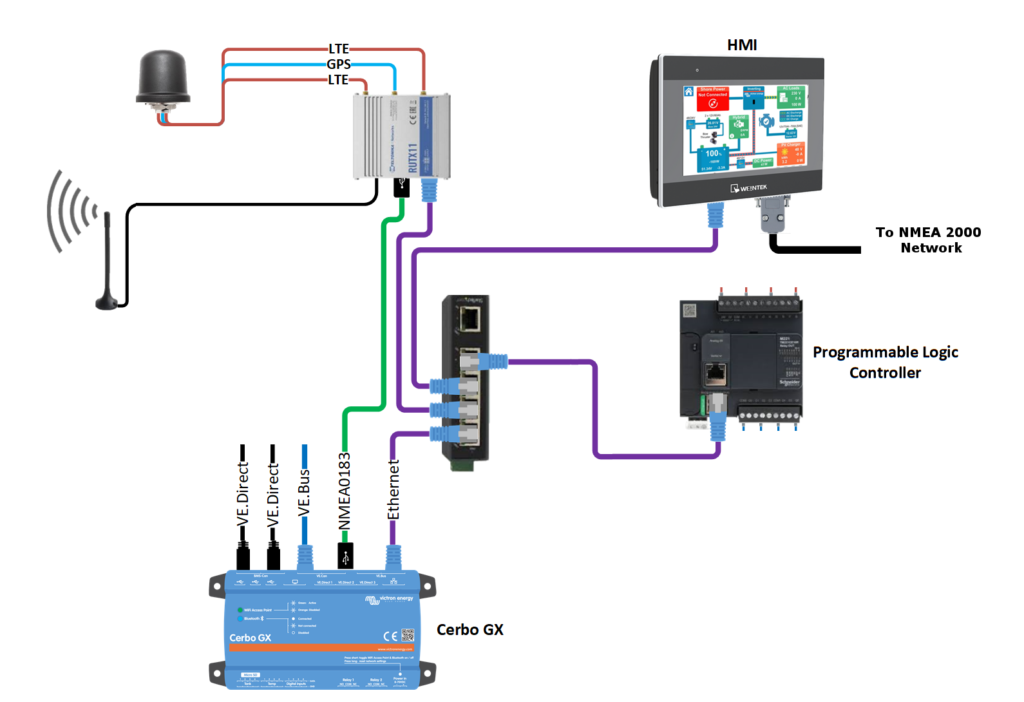
The PLC and Cerbo GX are the data collectors and controllers in the system, providing the inputs and outputs to the sensors and relays around the boat. Victron provide their own incredibly useful and powerful operating system (Venus OS) and remote management (VRM) tool, which are very good for monitoring and controlling the Victron kit. However, that is just one of the systems on board and Ortomarine need to provide complete control of the boat.
Ortomarine use ModBus, a standard communication protocol for PLCs, to share data between their colour touch screen (HMI), the PLC and the Cerbo GX. In addition they also bring in the NMEA 2000 data from the Vetus E-Line electric engine and Bow Thruster to their HMI.
75% of the system is hidden away in the “tech cupboard” and for most boat owners, the only part of the system they will interact with is the colour touch screen (HMI). It was the design of this user interface that Rob wanted to work on, to create a brand new design that was very clean, simple to use and easy to expand in the future.
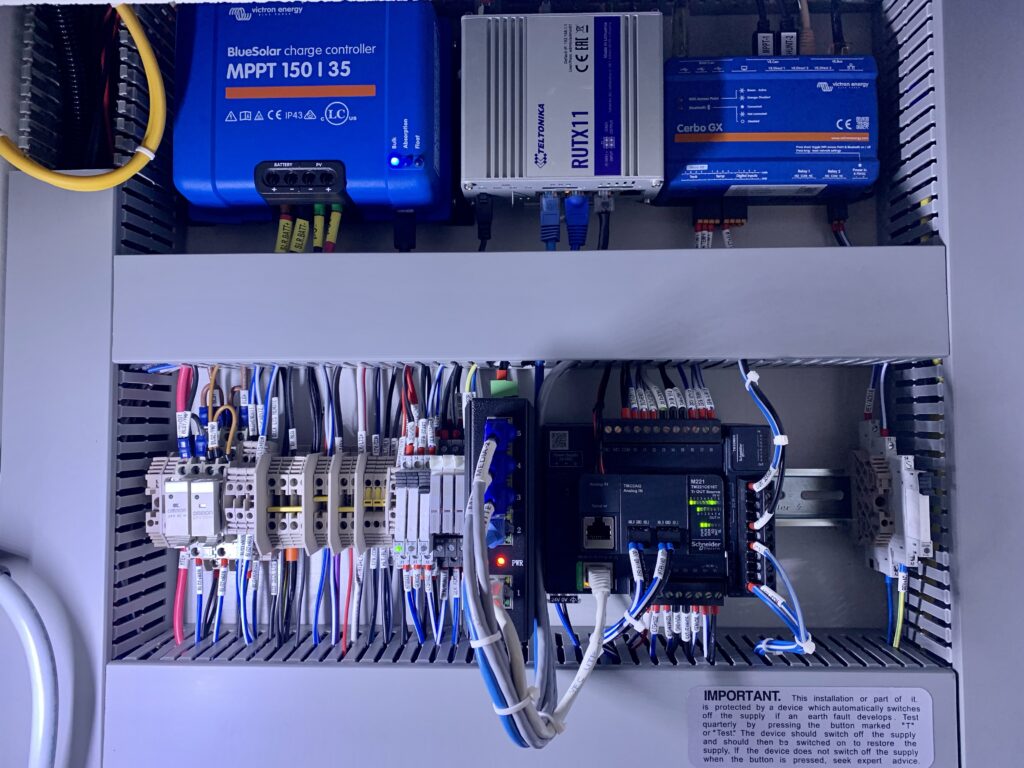
As soon as “Old Nick” was launched, Rob started to develop, test and fine tune the new user interface. A monochrome style was chosen which looked very modern, gave good contrast in bright conditions and also made the Green/Yellow/Red condition icons clearly stand out.
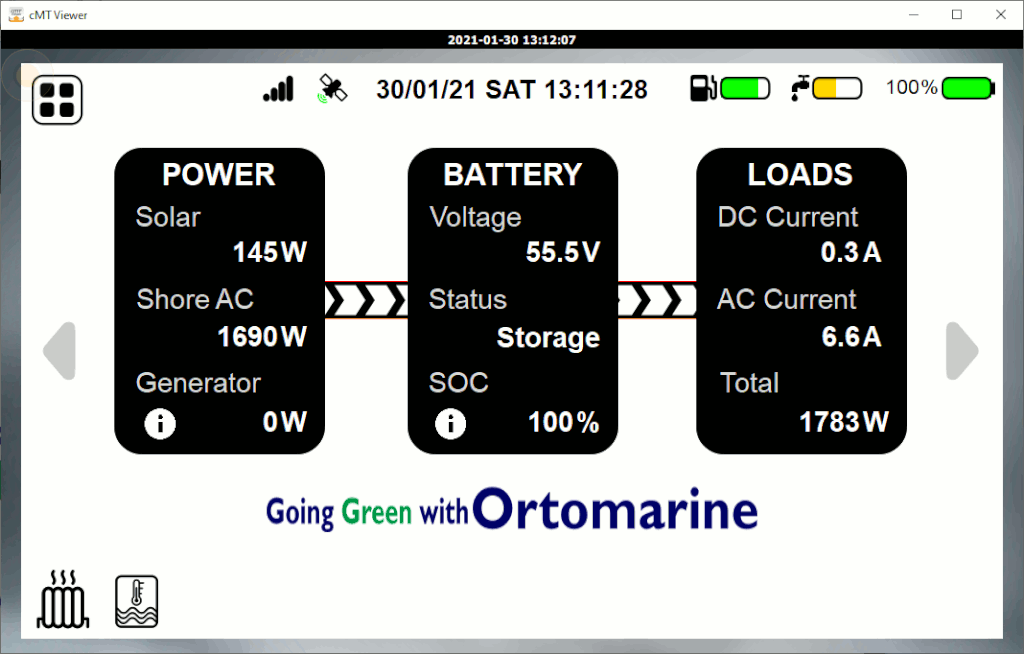
On the top status bar, indicators give you immediate notice of the battery and tank levels, while on the bottom bar, as services become active (such as heating, lighting, etc.) more indicators appear. The image above shows that both the central heating and water heating are active. The page structure was designed so that any function was only ever two key presses away, with a control panel page similar to the home page on a mobile phone.
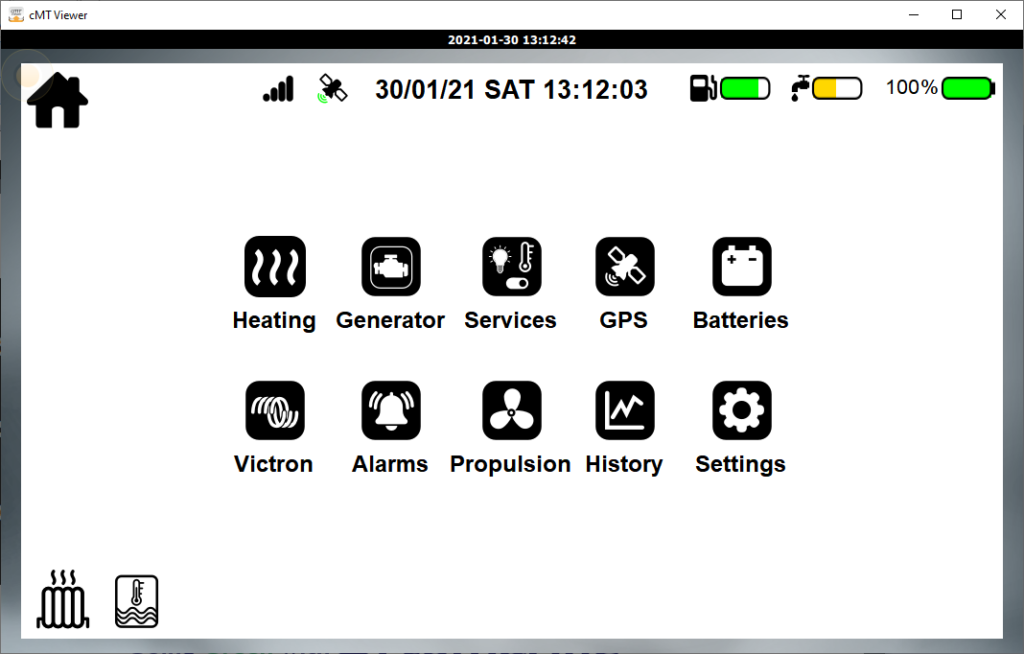
The following gallery shows some of the pages we most commonly use. In the future, Ortomarine can easily add new functionality by adding extra buttons on the Control Panel page.
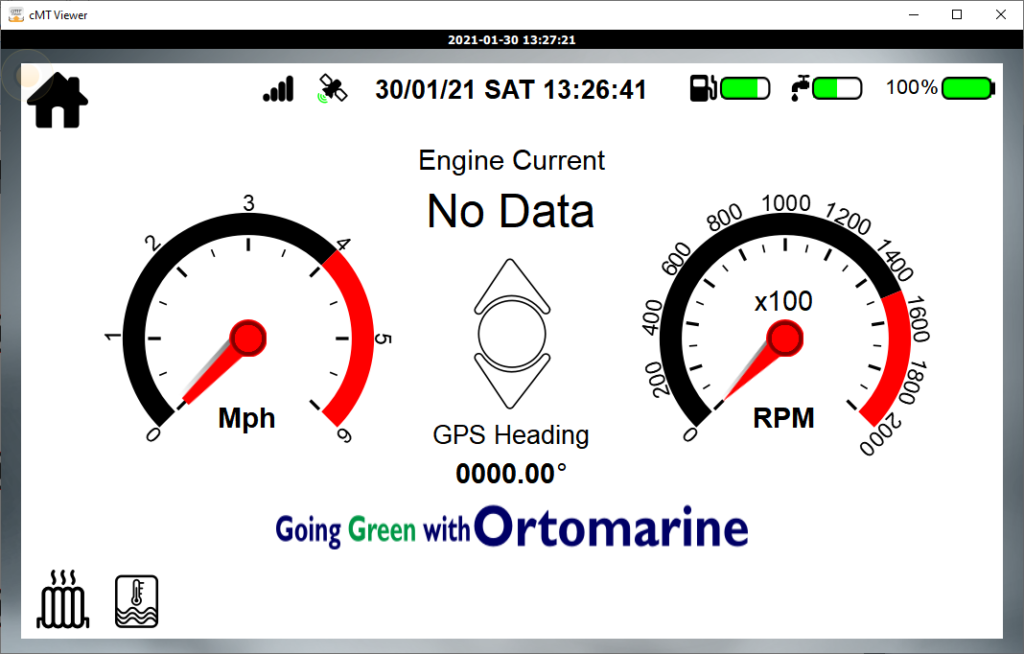
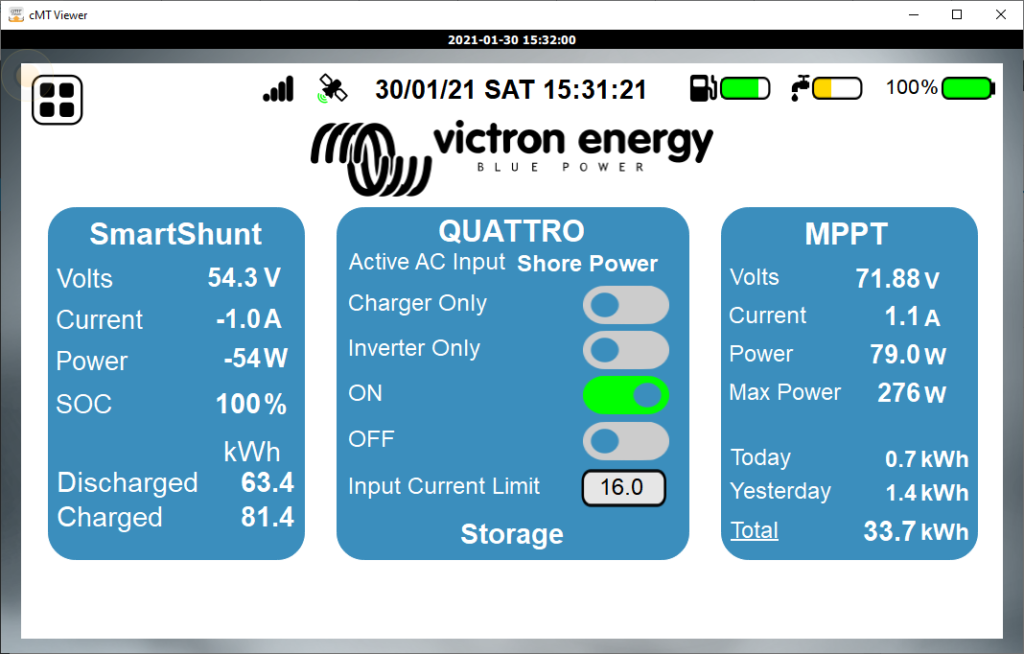
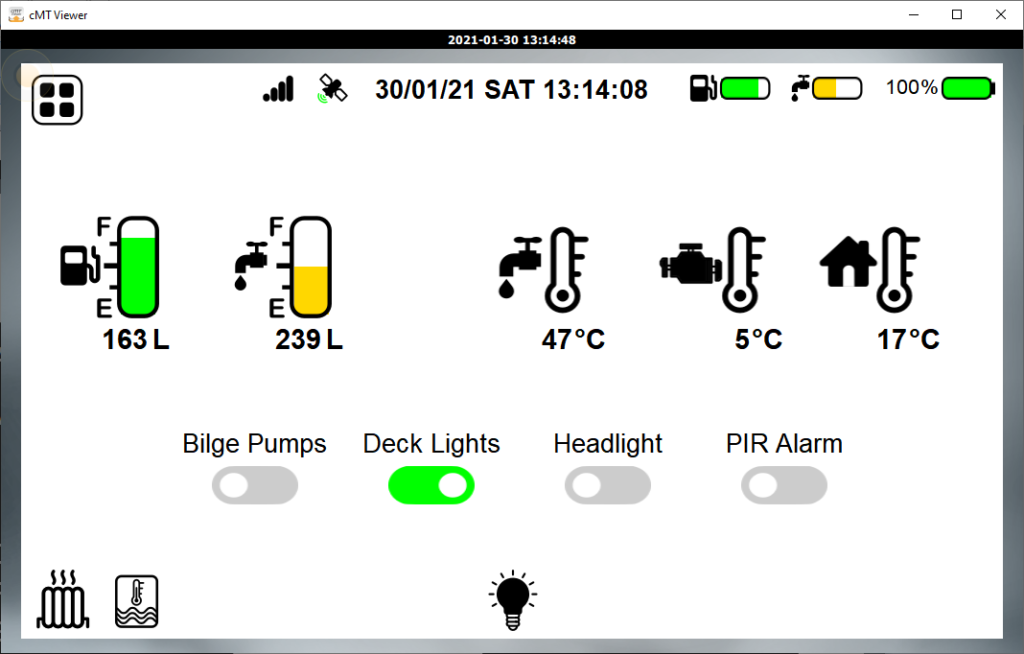
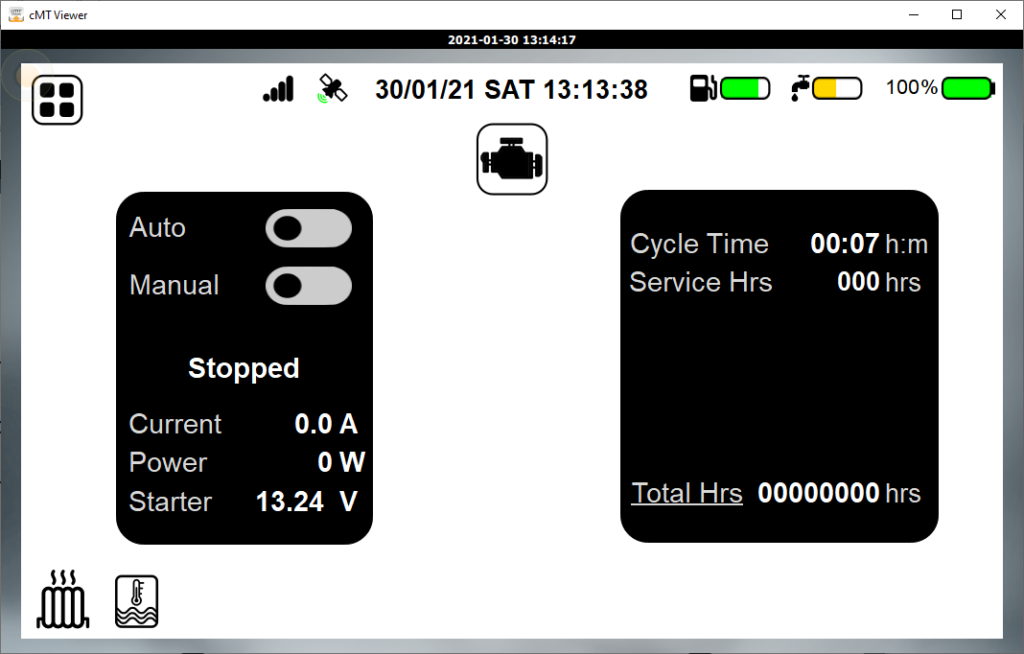
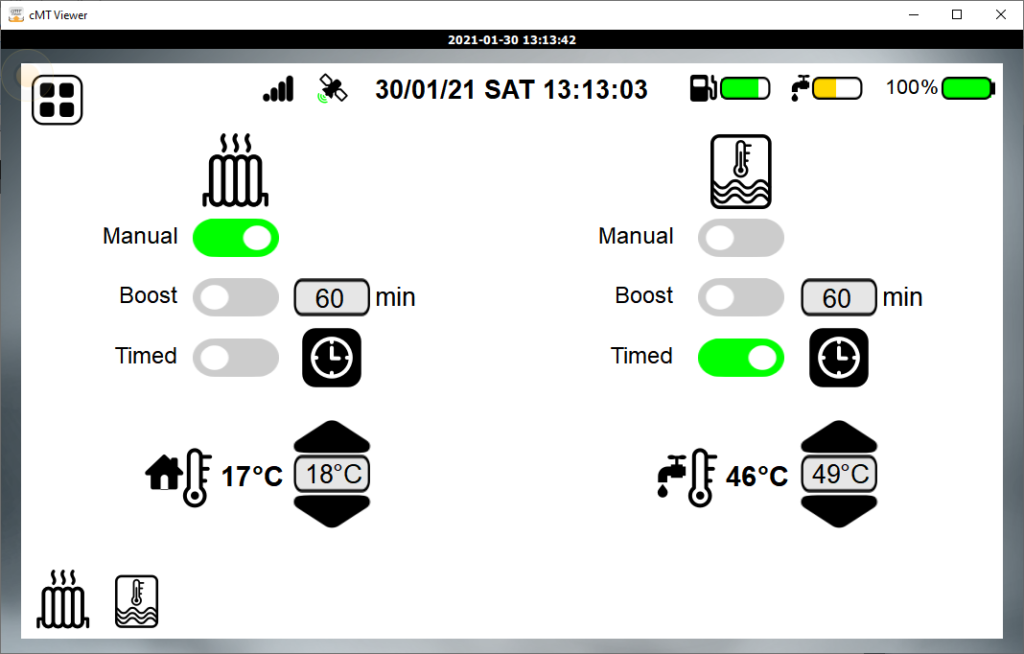
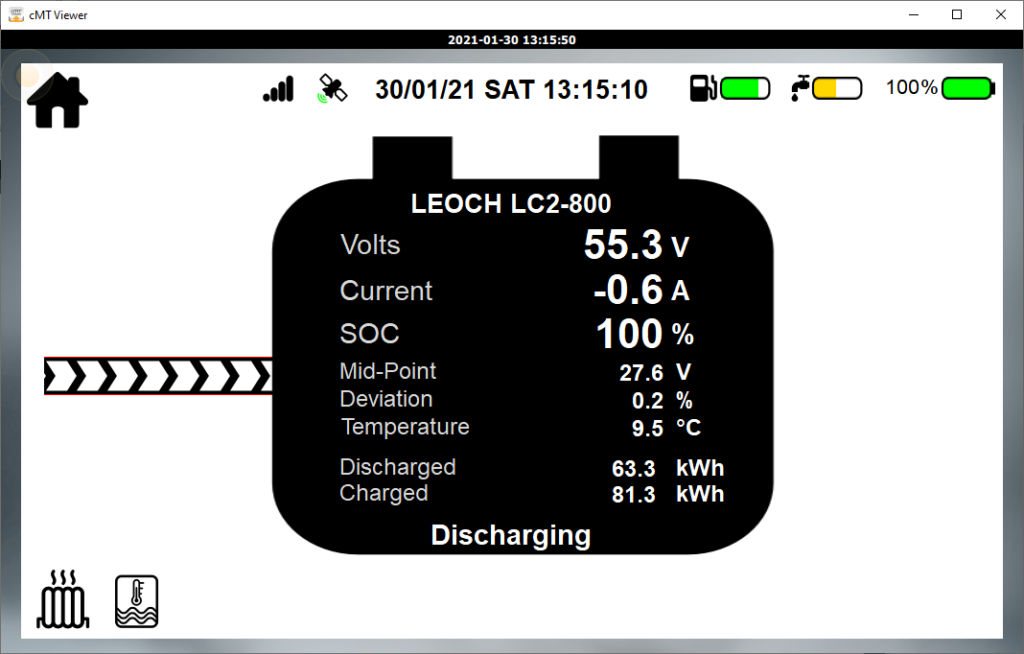
We have been using the new interface for over a month now and are very pleased with the way it operates. It is very intuitive and anyone with a modern phone, will rapidly feel at home with it. What is more, by downloading a free app on your smart phone, tablet or laptop, you can remotely access the exact same interface on any mobile device whilst on board.
When ashore, a second app (Easy Access 2) gives us an identical experience while we are away from the boat. Want to turn the heating on so that the boat is warm on our return? Done! Want to see how many litres of water are still to go, whilst filling up? Done! It really does make life so much easier.
It would be very easy for Ortomarine to “rest on their laurels”, being the only narrowboat builder to provide such an integrated solution. The fact that they have further developed the system, providing a more modern and streamlined interface, speaks volumes for their passion and commitment. We could not be happier with the results.

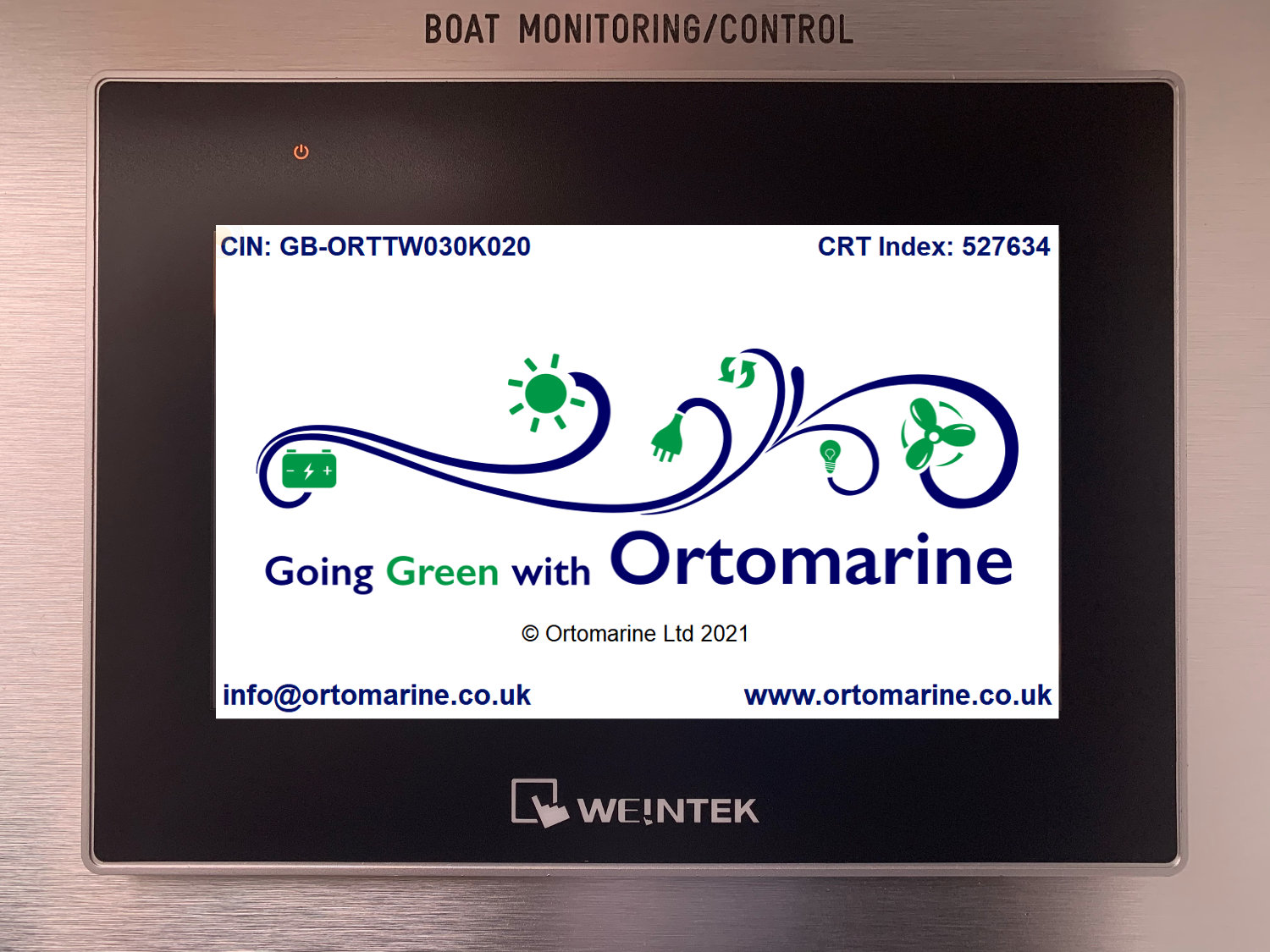
Loved reading about the control system on Old Nick. I have tried to apply the latest technology to our 17 yr old boat, but it refuses to comply. I am jealous of your set up, it’s exactly what I would want. I love using technology to its fullest extent. Some people don’t think it’s needed, but if it can be done then why not?
Thanks Steve. This boat is our dream. And we totally agree with you about using technology if it’s there to be used. After all – we are not still being towed by horses! It’s good to move with the times. Give us a wave when you’re passing. Can’t wait to get out and about.
All sorts of things aren’t needed, doesn’t stop people doing them! It’s about what you enjoy and what you want!
Did you think about doing a complete home automation style setup? Controlling internal lighting, door / hatch / window indicators, that sort of thing?
We can control the deck lights, which I thought was a gimmick but which is probably one of the controls we have used the most! We can also turn on the tunnel light and detect when we come out of the tunnel with a light sensor.
Not sure about controlling internal lights, we had Hive in our last house but didn’t really use it very much. Also have a couple of PIR sensors which I have not played with yet as we have been onboard pretty much 24/7 with lockdown.
Linking a light sensor to the tunnel light is clever! Planning to put one into an outdoor box for dusk/dawn stuff, so that’s on the list now!
When I first got my boat it was an empty shell, with power from a 16A cable through the window. I was using plug in inspection lamps for lighting and I had a couple of Bluetooth controlled sockets I could link to my phone. This ended up being so handy that I’ve really missed it as I put the “final” lighting in! I’ve put in the extra wiring I think will be needed, but not had a chance to build a controller yet.
Hi Martin, well I’ve never thought too deeply as I’ve not been financially able to go that far. However for me from my career background the important things to me are data monitoring more than control. Your set up meets everything I have always wanted in monitoring and with good control functions to. I think things like a solenoid operated valve to switch between gas cylinders (although I believe you’re gas free). Lighting control yes, heating control in zones too, with electric underfloor heating?
Steve
Hi Steve, yes – my boat is gas free but it’s a good idea! I went for gas free partly because I wanted to do as much myself as possible, and know nothing about gas. It would definitely irritate me not to have a gauge!
Electric underfloor heating would get a bit pricy! A friend of mine has an underfloor CH loop in his bathroom and it is nice.
The one I’ve been thinking about is using a diesel air heater with an insulated flexible duct and automated vents. Very complex, but the idea would be to quickly push a lot of heat into one part of the boat, while waiting for the fire to get going and warm the rest.
I once fitted an Ebespacher hot blown air system to a yacht we had. The diesel fired boiler was in a cockpit locker and the output ducted through cupboards etc unseen to expel hot air via outlets in the saloon and fore cabin. That part is simple to achieve. The outlets we had we’re somewhat like those on a car where you manually tilt them open/close/angle etc. I’m sure small electrical servos could achieve that control of those with some research? What completely boggles my mind is the recharging of your battery. We have solar, but it’s been pretty much ineffective during winter. During summer, while we were cruising solar kept us topped without any hook up. With more electrical dependant equipment the consumption rises but how do you get it back if your using propulsion also?
That’s basically my plan! Probably fixed position vents but servos to open/close. The layout from stern is an office/utility/tech room, then bedroom then bathroom. So probably one vent in each of those.
Unlike Old Nick, where I presume the generator is used separate from propulsion when necessary, mine is a parallel hybrid. A beta 43 engine with an aftermarket electric motor. So if needs be I can run on diesel propulsion that will also put a decent amount of charge into the batteries. It spins the electric motor, using it like a generator.
On the issue of battery charging, we have a crazy amount of power in our battery bank (38.4 KW) and even if we go down to 60% SOC that still gives us some 10 hours of cruising with no solar. The solar panels can give us enough power for at least half the year to completely cover our cruising consumption and if all else fails, the generator will automatically kick in at 40% SOC.
I’ve only just realised I’m talking to admin and Martin, so forgive me if I’m confusing you both as the same thing. I assumed I was addressing the owners of “Old Nick”. Happy talking this subject with whoever you are! It’s my little technical dreaming of what I would do if I custom built!
LOL, you and Martin were getting on so well, I didn’t like to interrupt!
Thank You Paul and Kay, it’s always made me scratch my head how you get the energy back in without solar. I’m guessing you have a silent running generator in the engine bay? It’s something I’ve thought about but I don’t think I have the space in our bay for a unit with a silencing box around it. You having a small electric drive I imagine gives you the room?
Hi Steve, yes the Vetus 6KVA generator is our backup for when we have some heavy usage days in the spring or autumn. In the engine room the electric engine is the smallest item, then the generator and finally the stack of 24 batteries.
That’s a super clear interface. Can I ask what language they use to develop the user interface?
Cheers JAC.
Hi Jason – the Ortomate system is based on a PLC and HMI, using a proprietary display and programming language. You can add your own SVG icons and graphics and then animate them within the programming environment to create some very nice results.